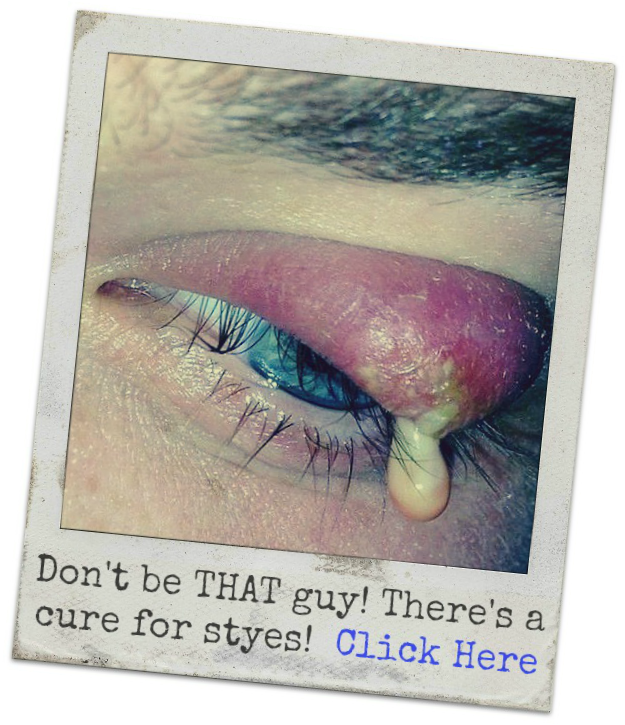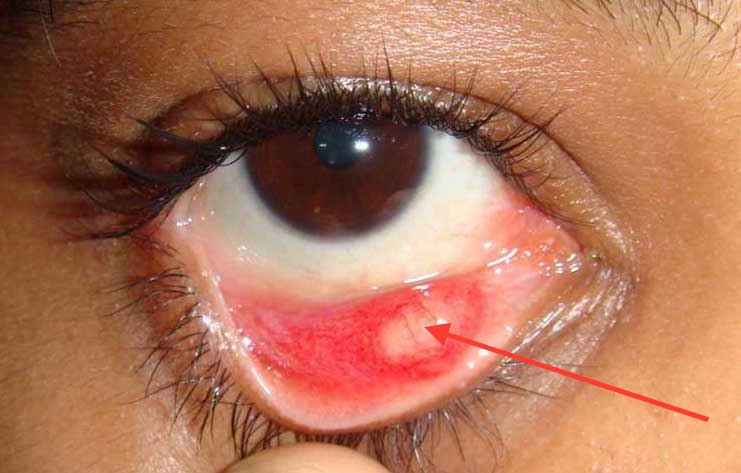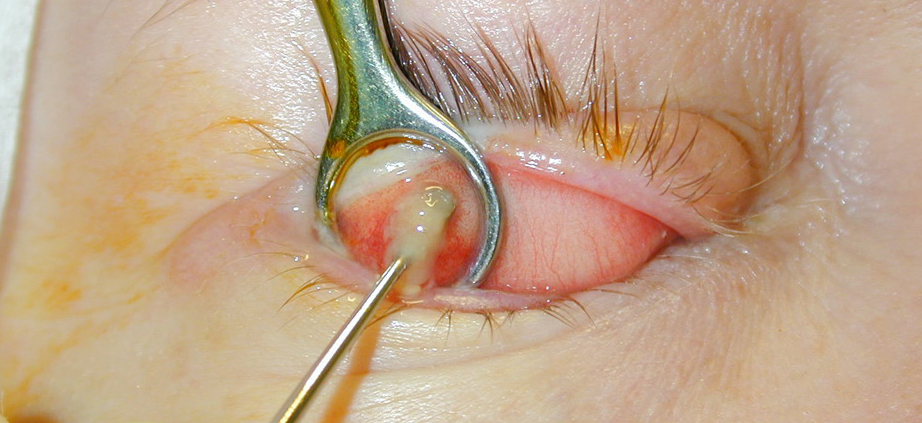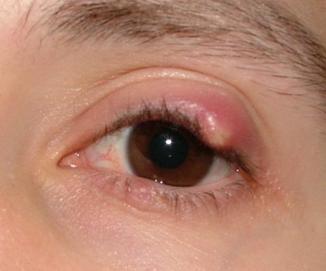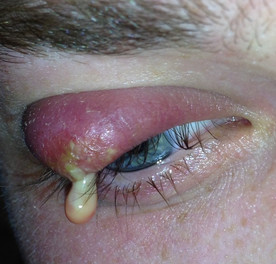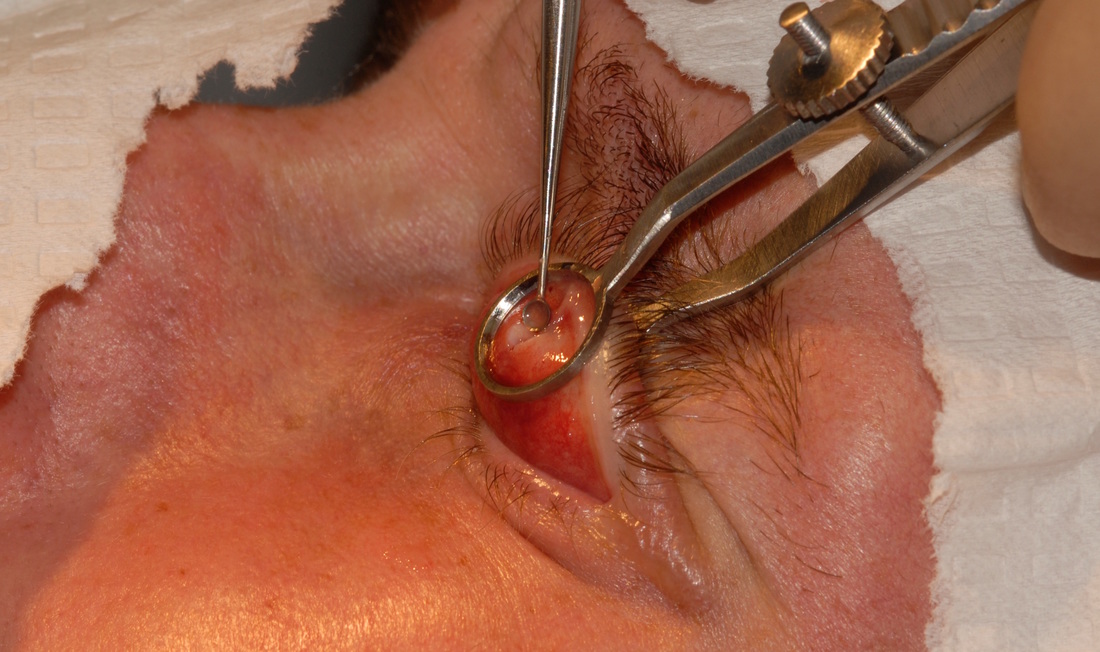HOW TO GET RID OF A CHALAZION FAST
There are several ways to clear a chalazion within a short time:
- Lance it.
- Pop it like a pimple.
- Undergo chalazion surgery.
- Use a warm compress.
WHAT IS A CHALAZION
Chalazia or chalazion is a painless, slow-growing, inflammatory cyst that develops in a small tear gland of the eyelid. These small glands are termed meibomianitis glands. A chalazion forms when blockage or inflammation of a mebiomian gland occurs.
Chalazions are often a result of an unhealed stye, or an inflammatory disease called blepharitis. Certain medications, hormonal changes or environmental conditions can make a person more likely to develop a chalazion.
A chalazion can last three weeks to a year and are often mistaken for an eye stye, cyst, boil or abscess. However, eye styes only last 5 to 14 days before clearing. During the life of a stye a pus sac develops. If the pus sac doesn't rupture, it becomes a chalazion.
A chalazion can last three weeks to a year and are often mistaken for an eye stye, cyst, boil or abscess. However, eye styes only last 5 to 14 days before clearing. During the life of a stye a pus sac develops. If the pus sac doesn't rupture, it becomes a chalazion.
1. LANCE IT
A lancet is the quickest way to get rid of a chalazion. It provides near instant results. It’s also the most dangerous method if not performed by a qualified physician or ophthalmologist.
The proper way to lance a chalazion is by pricking the center of the pus sac with a sterile lancet or other sharp instrument. The chalazion can be pierced from the outer or inner part of the eyelid depending on which side the chalazion comes to a head. A numbing agent should be utilized before lancing begins.
The proper way to lance a chalazion is by pricking the center of the pus sac with a sterile lancet or other sharp instrument. The chalazion can be pierced from the outer or inner part of the eyelid depending on which side the chalazion comes to a head. A numbing agent should be utilized before lancing begins.
For best results, apply a warm, moist compress to the chalazion for 15 minutes before lancing. This will help to liquefy the inner contents of the abscess and encourage better drainage. Once the chalazion has been lanced, softly milk the matter from the incision.
It should be noted, eyelids are extremely sensitive to pain. Especially the inner eyelid. Never lance a chalazion unless an anesthetic numbing agent is topically applied or injected. If no anesthetic is used, it will cause the patient to flinch when the pus sac is pierced—risking eye injury.
It should be noted, eyelids are extremely sensitive to pain. Especially the inner eyelid. Never lance a chalazion unless an anesthetic numbing agent is topically applied or injected. If no anesthetic is used, it will cause the patient to flinch when the pus sac is pierced—risking eye injury.
2. POP IT LIKE A PIMPLE
Popping a chalazion is the second fastest way to clear it. However, chalazions rarely come to a head on the outer part of the eyelid. When they do, they look much like a pimple or zit.
Before popping a chalazion, apply a warm compress to the abscess for 15 to 20 minutes. Then apply a topical anesthetic such as an alcohol swap that contains lidocaine. Once the surface of the chalazion is numb, use a lancet to puncture the center of the white head.
Once the chalazion has been pierced, use two fingers to squeeze the confined pocket of pus out. Incisions made on the outside of the eyelid tend to close quickly. This often prevents much of the abscess matter from being purged successfully. It may be require for you to repeat the process 2 or 3 times before all of the matter is expelled.
It should be noted, attempting to pop a chalazion can result in a new chalazion or stye to form. It is best to take a 1 to 3 day course of antibiotics as this can prevent a new cyst to from, it can also help prevent a more serious eye infection.
Once the chalazion has been pierced, use two fingers to squeeze the confined pocket of pus out. Incisions made on the outside of the eyelid tend to close quickly. This often prevents much of the abscess matter from being purged successfully. It may be require for you to repeat the process 2 or 3 times before all of the matter is expelled.
It should be noted, attempting to pop a chalazion can result in a new chalazion or stye to form. It is best to take a 1 to 3 day course of antibiotics as this can prevent a new cyst to from, it can also help prevent a more serious eye infection.
3. UNDERGO CHALAZION SURGERY
If you have a chalazion that needs to removed fast, surgery might be a good option. However, most doctors are usually booked for two or three weeks. Your best bet is to contact several doctors that specialize in chalazion surgery to find one that can perform the procedure with little delay.
Chalazion surgery is the most expensive treatment option. The cost of chalazon surgery without medical insurance can range from $400 to $1000.
4. USE A WARM COMPRESS
A moist warm compress can be effective for getting rid of a chalazion fast, and here’s why.
Applying a warm compress to a chalazion helps to soften the wall of the pus sac. This will often encourage the pus sac to break open and spill its contents. If the pus sac burst, the chalazion heals immediately. However, if the chalazion is embedded deep in the eyelid, a warm compress will likely not be effective.
Take a small towel or washcloth and soak it in a bowl hot water. Squeeze out the excess water and allow the cloth to cool to a comfortably high temperature. Test the intensity of heat on your forearm before applying it to the chalazion.
Apply the warm compress to the chalazion until the heat starts to diminish. Then reheat the compress and reapply. Continue to use this method about 10 times a day for 15 minutes each session.
Do not apply to much pressure to the eye with the compress as this could cause a new stye or chalazion to form. Any heating device used must be moist to be effective. Do not use dry heating pads.
Applying a warm compress to a chalazion helps to soften the wall of the pus sac. This will often encourage the pus sac to break open and spill its contents. If the pus sac burst, the chalazion heals immediately. However, if the chalazion is embedded deep in the eyelid, a warm compress will likely not be effective.
Take a small towel or washcloth and soak it in a bowl hot water. Squeeze out the excess water and allow the cloth to cool to a comfortably high temperature. Test the intensity of heat on your forearm before applying it to the chalazion.
Apply the warm compress to the chalazion until the heat starts to diminish. Then reheat the compress and reapply. Continue to use this method about 10 times a day for 15 minutes each session.
Do not apply to much pressure to the eye with the compress as this could cause a new stye or chalazion to form. Any heating device used must be moist to be effective. Do not use dry heating pads.
